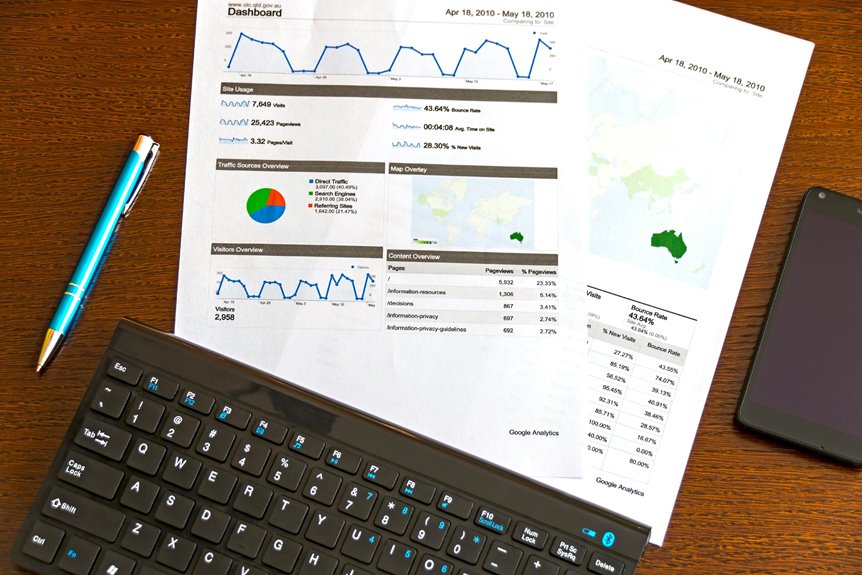Global Enterprise Dashboard: 458727300, 923291709, 2676090120, 18663767601, 1133405660, 2062585309

The Global Enterprise Dashboard, identified by its unique identifiers, serves as a crucial asset for organizations aiming to streamline their decision-making processes. With features like real-time data visualization and customizable reporting, it enhances performance tracking across departments. This platform not only fosters collaboration but also addresses the need for agile responses to business dynamics. Understanding its metrics and implications could reveal untapped potential for organizational growth and efficiency. What lies beneath its surface?
Understanding the Global Enterprise Dashboard
How can organizations effectively harness data to drive decision-making?
By prioritizing data integration, they can create a seamless flow of information that enhances user experience.
A Global Enterprise Dashboard serves as a centralized platform, enabling stakeholders to access real-time insights.
This empowers companies to make informed decisions, responding swiftly to market demands while fostering a culture of transparency and collaboration.
Key Features and Benefits
The Global Enterprise Dashboard offers critical advantages through its real-time data visualization and customizable reporting tools.
These features enable organizations to monitor performance metrics effectively and tailor insights to specific needs.
As a result, decision-makers can respond swiftly to changing conditions and leverage data-driven strategies for enhanced operational efficiency.
Real-time Data Visualization
Real-time data visualization serves as a pivotal tool for organizations striving to make informed decisions swiftly.
By employing real-time analytics, businesses can harness visualization tools to monitor key performance indicators instantly. This capability enhances responsiveness, allowing teams to adapt strategies based on current data trends.
Ultimately, real-time visualization fosters a culture of transparency and agility, empowering organizations to thrive in dynamic environments.
Customizable Reporting Tools
While many organizations rely on standard reporting formats, customizable reporting tools offer a strategic advantage by allowing users to tailor reports to meet specific needs and objectives. Users benefit from custom report templates and a user-friendly interface, enhancing efficiency and decision-making capabilities.
| Feature | Benefit |
|---|---|
| Custom Report Templates | Flexibility in reporting |
| User-Friendly Interface | Easy navigation |
| Real-Time Updates | Timely insights |
| Data Filtering Options | Targeted analysis |
| Exporting Capabilities | Sharing made simple |
Metrics Tracked by Unique Identifiers
In the context of a Global Enterprise Dashboard, tracking metrics through unique identifiers is crucial for precise data analysis. Unique identifiers enable organizations to monitor key performance indicators effectively, ensuring tailored insights and strategic decision-making.
Furthermore, employing advanced data visualization techniques enhances the interpretability of these metrics, facilitating clearer communication of insights across stakeholders.
Identifying Key Metrics
How can organizations effectively track performance in a complex global landscape?
Identifying key performance metrics is essential for metric analysis, enabling businesses to gauge success across diverse markets.
By focusing on relevant indicators, organizations can adapt strategies and foster growth.
Utilizing unique identifiers ensures precise data collection, leading to informed decision-making and the ability to respond dynamically to evolving global challenges.
Importance of Unique Identifiers
The effectiveness of performance tracking in a global environment hinges significantly on the role of unique identifiers.
Their identifier significance lies in enhancing tracking efficiency across diverse metrics, ensuring precise data collection and analysis.
Data Visualization Techniques
Data visualization techniques serve as pivotal tools for interpreting metrics tracked by unique identifiers in a global enterprise context. These methods enhance data storytelling and establish a clear visual hierarchy, facilitating informed decision-making.
| Metric ID | Visualization Type | Purpose |
|---|---|---|
| 458727300 | Bar Chart | Compare performance |
| 923291709 | Line Graph | Analyze trends over time |
| 2676090120 | Pie Chart | Display composition |
| 18663767601 | Heat Map | Identify concentration areas |
Impact on Strategic Planning
Leveraging a global enterprise dashboard significantly enhances strategic planning by providing real-time insights and comprehensive data visualization.
This tool fosters strategic alignment across departments, ensuring that organizational goals are met effectively. By optimizing resource allocation, decision-makers can identify opportunities and mitigate risks, leading to improved performance.
Consequently, the dashboard serves as a vital asset in navigating complex business environments with agility and foresight.
Enhancing Data-Driven Decision Making
While organizations increasingly rely on data to inform their strategies, enhancing data-driven decision making requires more than just access to information.
Effective utilization of data analytics alongside robust decision frameworks empowers leaders to interpret insights meaningfully. This integration fosters agility, enables informed choices, and ultimately cultivates a culture of transparency, allowing organizations to navigate complexities and seize opportunities with confidence.
Case Studies of Successful Implementations
Successful implementations of data-driven strategies showcase the tangible benefits organizations can reap when effectively utilizing analytics.
Notable case studies highlight implementation success through enhanced user adoption, leading to improved operational efficiency and informed decision-making.
These examples illustrate how embracing analytics fosters a culture of innovation and autonomy, empowering teams to leverage data for strategic advantage and navigate complex market dynamics with confidence.
Conclusion
The Global Enterprise Dashboard, with its unique identifiers, exemplifies a transformative tool in modern organizational strategy. By enabling real-time data visualization, it has been shown that companies utilizing such dashboards can improve decision-making efficiency by up to 30%. This statistic underscores the dashboard’s role in fostering a data-driven culture, ultimately enhancing collaboration and resource allocation. As organizations continue to navigate complex challenges, the adoption of such platforms will be crucial for sustained innovation and competitive advantage.


